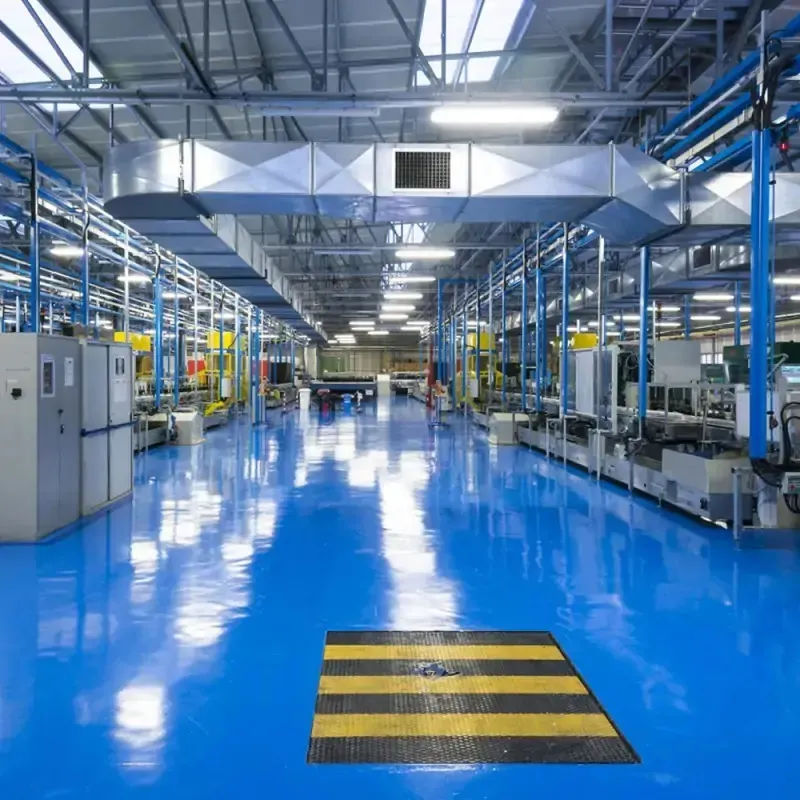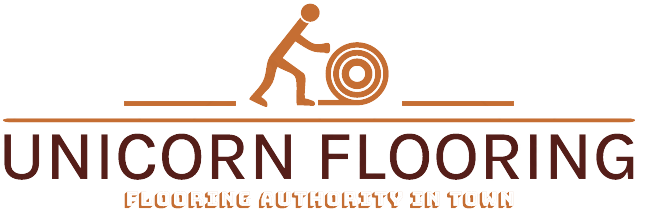Industrial Flooring in Pakistan

Introduction
Industrial flooring in Pakistan is one of the most important—yet often overlooked—aspects of any manufacturing, warehousing, or heavy-use facility. The right floor protects equipment, supports operations, improves safety, reduces maintenance costs, and can even increase worker productivity. In Pakistan’s rapidly growing industrial landscape—textiles, food processing, pharmaceuticals, automotive, cold-storage and e-commerce warehousing—choosing the right industrial flooring system is a strategic decision that affects long-term business performance.
This blog covers everything you need to know about industrial flooring in Pakistan: common types, technical requirements, selection criteria, installation and maintenance best practices, cost drivers, typical use-case recommendations, common problems and fixes, and FAQs tailored to local contexts.
Why industrial flooring matters?
An industrial floor isn’t just “concrete.” It’s a systems decision that must deliver:
- Durability against mechanical wear (forklifts, trolleys), abrasion, chemical attack and thermal stress.
- Safety: slip resistance, antistatic or conductive properties where needed, clear zoning/markings.
- Hygiene: seamless, easy-to-clean surfaces for food, pharma, clean manufacturing.
- Load capacity for heavy machinery and racking systems.
- Low lifecycle cost: initial install cost + maintenance + downtime.
- Aesthetic & branding: sometimes neglected but useful for high-value client spaces or showrooms.
Common Industrial Flooring Types
1. Polished Concrete
What it is: Hardened concrete ground and mechanically polished to a smooth, sometimes glossy finish. Can be densified with chemical hardeners.
Best for: Warehouses, manufacturing halls with heavy loads, logistics hubs.
Pros: Low maintenance, long life, economical for large areas, high compressive strength.
Cons: Can be dusty if not properly treated; limited chemical resistance unless treated; slip when wet unless textured.
2. Epoxy Flooring
What it is: Multi-layer system with epoxy resin topcoats (and often primers and fillers) applied to concrete substrate.
Best for: Production floors, chemical plants, warehouses, workshops.
Pros: High abrasion resistance, seamless, excellent adhesion, wide range of colors and finishes, good chemical resistance (depending on formulation).
Cons: Sensitive to moisture vapor emission from substrate during installation; can yellow under UV (outdoor use limited); longer cure times for heavy traffic.
3. Polyurethane (PU) and Urethane Cement Floors
What it is: PU systems include flexible topcoats and screeds. Urethane cement is a high-performance polymer mortar.
Best for: Food processing, cold storage, chemical plants, areas needing thermal shock resistance.
Pros: Excellent impact, chemical and thermal resistance; flexible variants resist cracking; suitable for hot-wash environments.
Cons: Higher material cost than standard epoxies; installation needs experienced applicators.
4. Methyl Methacrylate (MMA)
What it is: Fast-curing resin that can be applied at low ambient temperatures and returned to service quickly.
Best for: Facilities requiring minimal downtime (24–48 hours), car park ramps, emergency remediation.
Pros: Extremely quick cure, good toughness, can be applied in cold conditions.
Cons: Higher cost, strong odors during installation (ventilation needed).
5. Vinyl/Sheet Flooring & LVT (Luxury Vinyl Tiles)
What it is: Flexible polymer sheets or tiles adhered to substrate.
Best for: Laboratories, hospitals, medical rooms, light-duty production areas and offices within industrial facilities.
Pros: Hygienic, easy to replace, comfortable underfoot.
Cons: Poor mechanical resistance for heavy forklifts; seam maintenance required.
6. Epoxy Terrazzo / Decorative Systems
What it is: Epoxy matrix with marble/recycled chips for decorative, highly durable finish.
Best for: Showrooms, corporate lobbies, high-end commercial areas attached to industrial plants.
Pros: Beautiful, durable, seamless.
Cons: Higher cost and skilled labor required.
7. Anti-Static / Conductive Flooring (ESD)
What it is: Flooring systems designed to dissipate electrostatic charge.
Best for: Electronics manufacturing, assembly rooms, data centres.
Pros: Protects sensitive equipment, prevents sparks.
Cons: Needs testing and grounding; higher system complexity.
Typical industrial flooring applications in Pakistan
Textile & Dyeing Units
Need chemically resistant, washable floors — urethane cement or high-grade epoxy with anti-stain properties.
Food & Beverage Processing
Hygienic, seamless, anti-bacterial systems — PU or epoxy systems compliant with food-grade washdown.
Pharmaceutical
ESD, seamless surfaces, tightly controlled cleanliness — vinyl flooring or epoxy with cGMP considerations.
Automotive & Workshops
High abrasion and impact — epoxy bonded with aggregate or polyurethane mortar.
Cold Storage & Freezers
Floors must resist thermal shock and maintain slip resistance — specialized polyurethane systems or epoxy designed for low temperatures.
Warehousing & Logistics
Polished concrete or heavy-duty epoxy screeds for high load capacity and efficiency.
Installation Overview
A durable industrial floor depends heavily on correct installation. Here’s a practical sequence:
1. Substrate Assessment
- Test concrete strength and moisture content (relative humidity or calcium chloride test).
- Identify cracks, joints, weak toppings, oil contamination or previous coatings.
2. Surface Preparation
- Mechanical preparation: diamond grinding, shot blasting or scarifying to achieve a profile.
- Chemical cleaning for contaminants.
- Remove loose concrete, laitance, paints, oils — poor prep = premature failure.
3. Repair & leveling
- Treat cracks and joints (saw cut for movement joints, fill non-movement joints with flexible sealant).
- Use polymer-modified mortars to level the floor and achieve desired falls for drainage.
5. Priming
- Apply compatible primer to improve adhesion and to seal porous concrete.
- Primer selection depends on system (epoxy primer for epoxy topcoat; primer for moisture mitigation if needed).
6. Screed / base coats
- Apply mortar or self-leveling screeds if specified for load or finish requirements.
- For decorative floors, chips or broadcast may be applied at this stage.
7. Topcoats and finishes
- Apply finishing coats (epoxy, PU, MMA) at recommended film thickness.
Consider anti-slip aggregates, sealers, or UV-stable topcoats for outdoor exposure.
8. Curing, testing, and handover
- Allow manufacturer-specified curing time. Test adhesion, hardness, and surface resistivity if ESD required.
- Apply markings and safety signage before returning to service.
Maintenance & lifecycle Care
Good maintenance extends life and reduces cost.
Daily/weekly: Dry sweeping and dust removal. For food or clean environments, wet mopping with neutral pH cleaners.
Monthly: Inspect for damage, delamination, joint failures. Reapply anti-slip treatments in high-wash areas as needed.
Annually: Deep clean, reseal surface if required, check and repair expansion joints.
As needed: Spot repair for heavy dents, recoat high-wear zones (entrance, forklift lanes).
Maintenance products: Use manufacturer-recommended cleaners and avoid harsh solvents unless the coating is rated for them.
Cost Factors & Budgeting
Industrial flooring pricing depends on several variables:
- Floor area (m²): Larger areas reduce per-unit mobilization costs.
- System type: Polished concrete often cheaper; urethane cement or MMA more expensive.
- Surface prep: Poor substrate increases cost heavily (shot blasting, repairs).
- Thickness & performance spec: Heavy-duty screeds cost more.
- Additives & features: Anti-static, chemical resistance, anti-slip aggregates, decorative chips raise price.
- Labor & skill level: Skilled applicators command higher rates but reduce rework risk.
- Downtime & fast-track needs: Fast cures (MMA) cost more but reduce lost production time.
- Local availability of materials: Import costs for specialty resins can inflate price.
Tip for Pakistan: Factor in seasonal climate (monsoon humidity) and plan installations in drier months where possible to reduce moisture issues and ensure proper curing.
Common problems in Pakistan (and how to fix them)
1. Delamination / blistering
- Cause: Poor surface prep, moisture vapor, contaminants.
- Fix: Remove failed coating, re-prepare surface (shot blast/grind), evaluate moisture mitigation, use moisture-tolerant system.
2. Cracking / joint failure
- Cause: Insufficient movement joints or weak substrate.
- Fix: Install movement joints, use flexible mortar or membranes, or saw and reseal as required.
3. Yellowing or discoloration
- Cause: UV exposure with non-UV stable resins or chemical attack.
- Fix: Use UV-stable topcoat or replace topcoat with UV-resistant polyurethane.
4. Slippery when wet
- Cause: Smooth glossy finish without anti-slip additive.
- Fix: Add anti-slip aggregates or apply textured finish in wet zones.
5. Chemical staining
- Cause: Use of non-chemical resistant coating.
- Fix: Upgrade to chemically resistant epoxy/urethane systems in affected areas.
Choosing contractors & quality control
When hiring in Pakistan, look for:
- Track record: Completed industrial projects similar to yours. Ask for references and site visits.
- Technical support: Manufacturers’ backing and clear warranties.
- Testing capability: Adhesion tests, moisture tests, hardness and ESD resistivity tests where required.
- Training & safety compliance: Proper PPE, ventilation during installation, confined space procedures.
- Clear contract: Include specs (system layers, thickness, curing times), inspection milestones, and warranties.
Quality control checklist to request before acceptance:
- Surface profile measurement report (e.g., CSP).
- Moisture test results (RH or calcium chloride).
- Adhesion test records.
- Warranty documentation specifying traffic return time.
- Photographic record of each stage.
Sustainability & green considerations
Industrial floors can contribute to sustainability:
- Polished concrete reduces material use and provides high reflectivity (energy savings under lighting).
- Low VOC/solvent-free systems improve worker safety and air quality.
- Recycled aggregates or chips in decorative terrazzo reduce resource consumption.
- Long life and repairable systems are more sustainable than short-life replacements.
Ask suppliers for environmental product declarations (EPDs) or VOC ratings if sustainability is important in procurement.
Local supply & logistics considerations
- Many resin systems are imported; lead time and customs can affect project schedules in Pakistan.
- Seasonal humidity and monsoon can slow installations; plan for dry periods and allow appropriate curing.
- Skilled applicators are concentrated in urban centers (Karachi, Lahore, Faisalabad, Islamabad, Sialkot). For remote sites, factor in mobilization and accommodation costs.
Quick case recommendations (by industry)
- Textile dyeing & finishing: Urethane cement or chemical-resistant epoxy with sufficient slope for drains.
- Food processing: Seamless polyurethane systems with coved skirtings for hygiene.
- Cold storage: Low-temperature-rated polyurethane or epoxy with surface profile for slip resistance.
- Heavy manufacturing/warehousing: Polished concrete or epoxy mortar with heavy-duty topcoat.
- Electronics assembly: ESD conductive epoxy with certified grounding.
Final thoughts & action steps
Industrial flooring in Pakistan is a long-term investment that protects your operations and people. In Pakistan’s diverse industrial sectors, tailor your flooring choice—don’t copy a competitor without checking specs. Here’s a simple action checklist before you start:
Define traffic, chemical exposure, hygiene, and downtime constraints.
Test the existing concrete (strength & moisture).
Shortlist systems that match your technical needs (epoxy, PU, MMA, polished).
Get proposals from 2–3 experienced contractors with site references.
Inspect surface prep and insist on documented tests (moisture, adhesion) before topcoats are applied.
Plan maintenance budget and schedule as part of lifecycle cost.
FAQ'S
With proper design, installation and maintenance, industrial floors can last 10–25+ years. The exact life depends on traffic, chemicals, substrate condition and maintenance regime.
It’s risky. High humidity and cold concrete during the rainy season increases chance of moisture problems. If unavoidable, use moisture-tolerant systems and strict moisture testing.
It depends. Polished concrete is economical, very durable for heavy loads, and low maintenance. Epoxy is better where chemical resistance, seamless coverage, color coding or higher abrasion resistance is needed.
That depends on the system: epoxy often requires 24–72 hours to be foot traffic ready and up to 7 days for heavy traffic; MMA systems can return to service within 24–48 hours. Always follow manufacturer specifications.
Warranties are as good as the supplier and contractor. Prefer systems backed by international or well-established local manufacturers and ensure the warranty is written into the contract with clear acceptance criteria.
